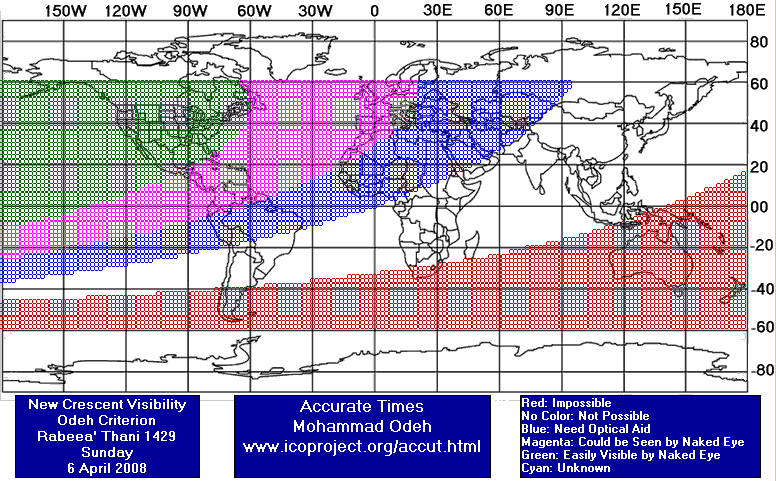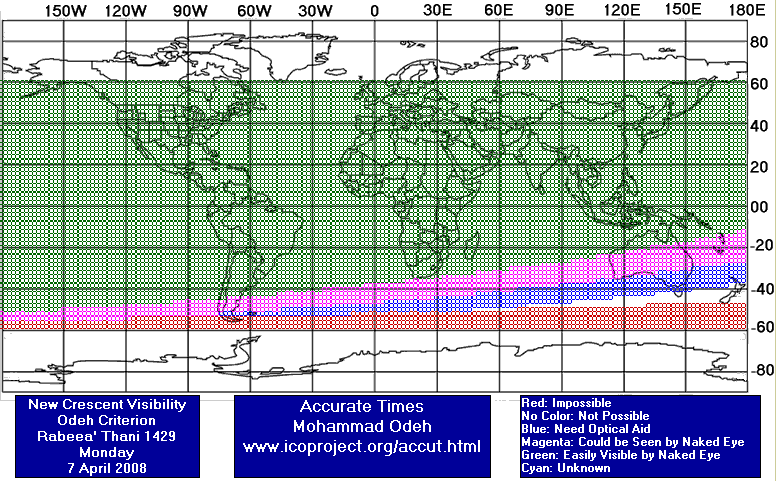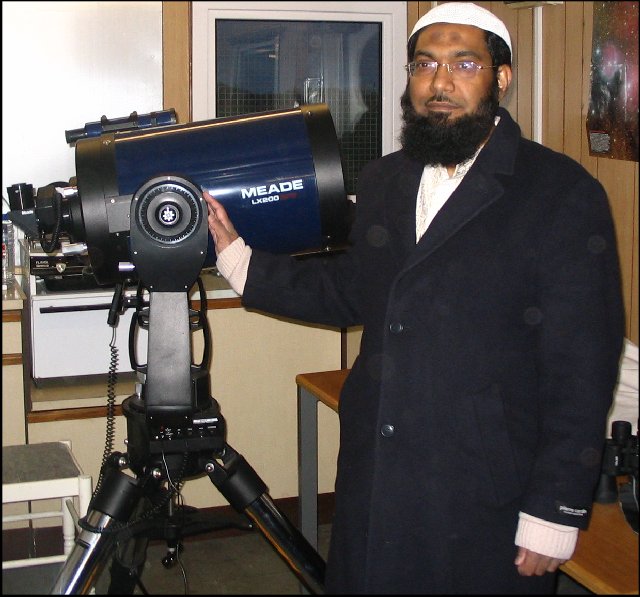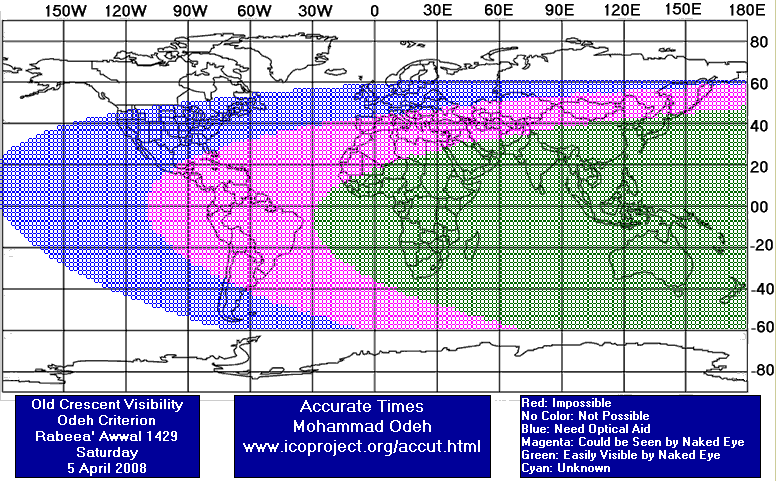Visibility of Rabee Thani Crescent
(1429 AH)
- When to Observe Rabee Thani Waxing (NEW) Crescent ?
- Rabee Thani Waxing (NEW) Crescent Observation Results
- The OFFICIAL First Day in Different Countries
- When to Observe Rabee Awwal (OLD) Crescent ?
- Rabee Awwal Waning (OLD) Crescent Observation Results
The geocentric conjunction (Geocentric New Moon) will occur Inshalla on (Sunday 06 April 2008) at
03:55 UT.
Sighting the new crescent on (Sunday 06 April 2008) and on (Monday 07 April 2008) is shown in the below graphs using the program Accurate Times by Mohammad Odeh according to Odeh criterion. Where:-
According to the Universal Hejric Calendar (UHC), which is based on the calculated crescent visibility, the start of this month in the Eastern Region will be on Monday 07 April 2008, and in the Western Region will be on Monday 07 April 2008 also.
- Results of seeing the crescent, and the first day of the month in different countries will be added here Inshalla as we receive the reports from ICOP's members. If you wish to be a member in ICOP, or to know more about it, kindly click here.
So far, the earliest sighting of the crescent was on Sunday 06 April 2008 from USA by ICOP member Mr. Jim Stamm.
Sunday 06 April 2008:
Surface conditions at time of first sighting at
Topocentric and local time values from “Accurate Times”:
I tried to view the crescent earlier in the afternoon. Three offsets from the Sun about 1.5 hours apart did not present any image. I was confident of the focus and field of view for each attempt. By the time I finally found the image, the sun had set. The lower altitude had degraded the focus, and sloppy technique put the crescent out of the field of view. Sweeping had to be used to find the initial image. No good science came from this observation. Only a reminder to improve my technique.
Crescent first observed through 8” SC telescope:
Observer(s): Jim Stamm"
Monday 07 April 2008:
Monday 07 April 2008:
Tuesday 08 April 2008:
The geocentric conjunction (Geocentric New Moon) will occur Inshalla on (Sunday 06 April 2008) at
03:55 UT.
Sighting the OLD crescent on (Saturday 05 April 2008) is shown in the below graph using the program Accurate Times by Mohammad Odeh according to Odeh criterion. Where:-
When to Observe Rabee Thani Waxing (NEW) Crescent ?



Rabee Thani Waxing (NEW) Crescent Observation Results
There were 10 additional members of York, which included scientists, civil servants and general members of the Muslim community. Unfortunately, we were unable to sight the crescent moon (even with telescopes) due to the sky being overcast by clouds. There were snow-showers earlier in the day in most of York. We were told later by one of the members of the York Astronomy Society (scientist) that even if the sky was clear, we would not have been able to sight the crescent moon (by the naked eye) due the moon being too close to the sun (hence being hidden by it's glare). Therefore, the Ulama have decided that the present month of Rabi-ul-Awal 1429 AH will have 30 days and the next month (Rabi-ul-Thani 1429 AH) will start from Tuesday, 8 April 2008, Insha-Allah."

"Location = Tucson, Arizona (USA)
Longitude = 110.9645 W
Latitude = 32.4204 N
Elevation = 842 meters
Time Zone = -7.0 hours
Tucson International Airport (805 m):
Temperature = 24 degrees Celsius
Relative humidity = 12 percent
Sealevel pressure = 1009 mb
Moderate haze
Sunset (at sea level) = 18:52
Moonset (at sea level) = 19:56
Time from new moon at 19:21 = 21 hr. 14 min.
Moon lag time = 64 min.
Relative altitude = 12.63 degrees
Elongation from Sun = 12.77 degrees
Crescent width = 25 arc seconds
Illumination = 1.24 percent
Time = 18:53

The OFFICIAL First Day in Different Countries

When to Observe Rabee Awwal Waning (OLD) Crescent ?






